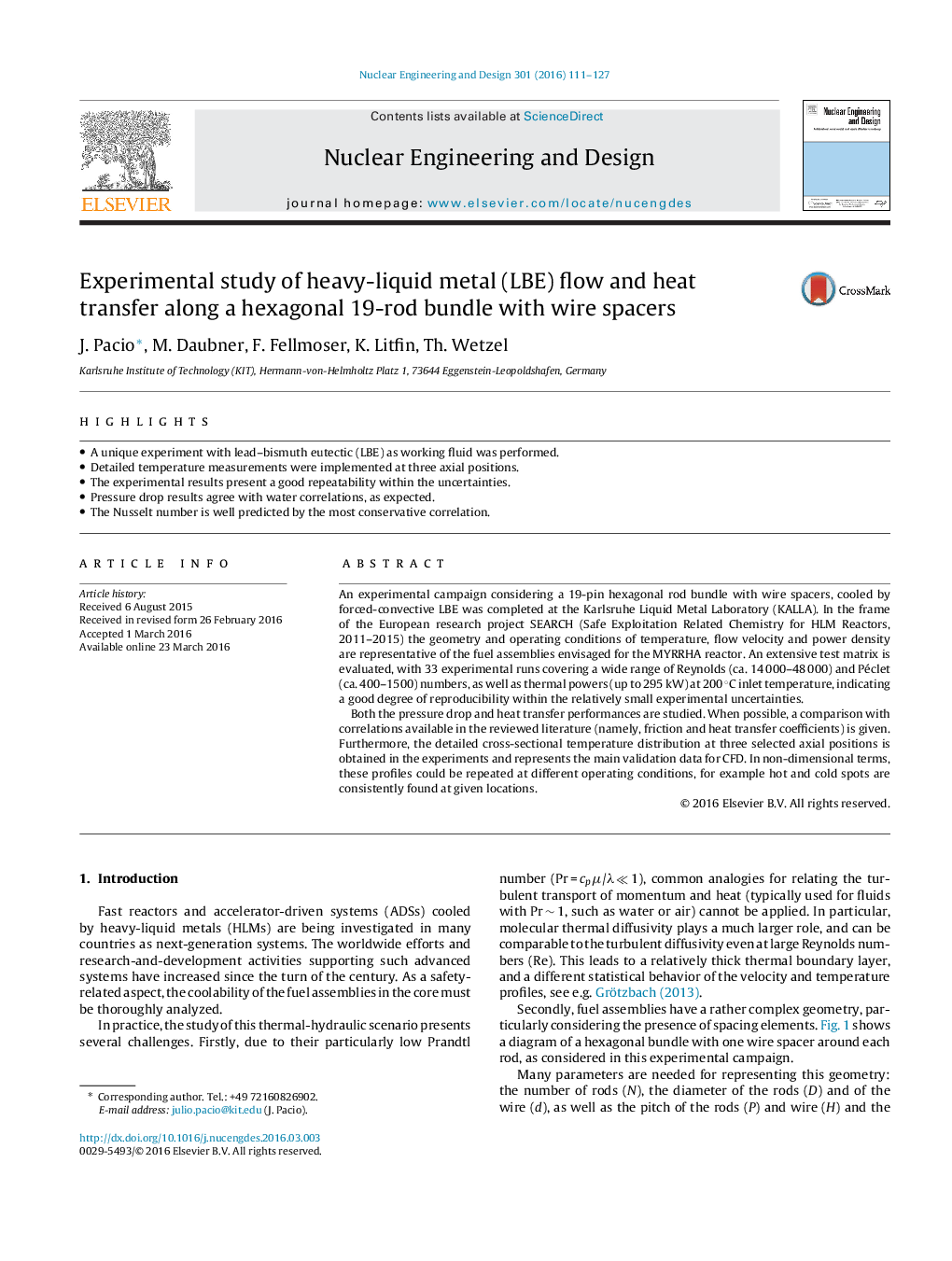| Article ID | Journal | Published Year | Pages | File Type |
|---|---|---|---|---|
| 295970 | Nuclear Engineering and Design | 2016 | 17 Pages |
•A unique experiment with lead–bismuth eutectic (LBE) as working fluid was performed.•Detailed temperature measurements were implemented at three axial positions.•The experimental results present a good repeatability within the uncertainties.•Pressure drop results agree with water correlations, as expected.•The Nusselt number is well predicted by the most conservative correlation.
An experimental campaign considering a 19-pin hexagonal rod bundle with wire spacers, cooled by forced-convective LBE was completed at the Karlsruhe Liquid Metal Laboratory (KALLA). In the frame of the European research project SEARCH (Safe Exploitation Related Chemistry for HLM Reactors, 2011–2015) the geometry and operating conditions of temperature, flow velocity and power density are representative of the fuel assemblies envisaged for the MYRRHA reactor. An extensive test matrix is evaluated, with 33 experimental runs covering a wide range of Reynolds (ca. 14 000–48 000) and Péclet (ca. 400–1500) numbers, as well as thermal powers (up to 295 kW) at 200 °C inlet temperature, indicating a good degree of reproducibility within the relatively small experimental uncertainties.Both the pressure drop and heat transfer performances are studied. When possible, a comparison with correlations available in the reviewed literature (namely, friction and heat transfer coefficients) is given. Furthermore, the detailed cross-sectional temperature distribution at three selected axial positions is obtained in the experiments and represents the main validation data for CFD. In non-dimensional terms, these profiles could be repeated at different operating conditions, for example hot and cold spots are consistently found at given locations.
